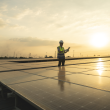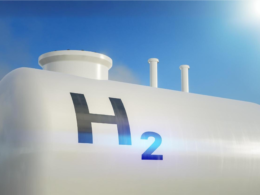The pace of new solar, wind and battery capacity additions in the United States is set to slow sharply in 2025, dampening sentiment in the clean energy sector, according to data from energy analytics platform Cleanview. Combined installations are projected to rise by around 7% this year compared with 2024 – the smallest annual increase in more than a decade – amid deep cuts to renewable energy support since President Donald Trump returned to office.
Texas and California, which together account for over one-third of the nation’s combined clean energy capacity, have both recorded growth below the national average so far this year. California, in particular, has seen its weakest solar expansion on record. Growth in other top solar-producing states including Florida, Nevada, Georgia and Virginia has also lagged.
Despite the slowdown, there are signs of diversification, with states such as Arizona, Ohio and Indiana posting solar capacity increases more than twice the national average. National solar capacity has grown 181% since 2020 to about 136,250 megawatts (MW) as of mid-2025, but this year’s 10% rise marks a sharp slowdown from the 27% average annual growth of the past five years.
Wind power growth has continued to weaken, hampered by rising costs and site availability constraints. The sector has expanded by just 1.8% so far in 2025 – the smallest increase since at least 2010 – with seven of the 10 largest wind-producing states recording no growth.
Battery energy storage systems (BESS) remain the fastest-growing segment, expanding by 22% year-on-year to 33,212 MW. Growth in California and Texas has lagged the national average, but states such as Arizona, Nevada, Massachusetts and Idaho have seen far stronger increases. Federal support for batteries has remained intact, in contrast to reductions in incentives for solar and wind, positioning the technology as the leading driver of clean energy expansion.
As of mid-2025, the combined US solar, wind and battery capacity stood at 325,700 MW, up 20,700 MW from a year earlier. Texas led state-level additions, followed by Arizona, California and Indiana. Analysts expect batteries to remain in high demand, particularly in regions with surplus solar output, even if the roll-out of new solar and wind projects remains constrained.





















